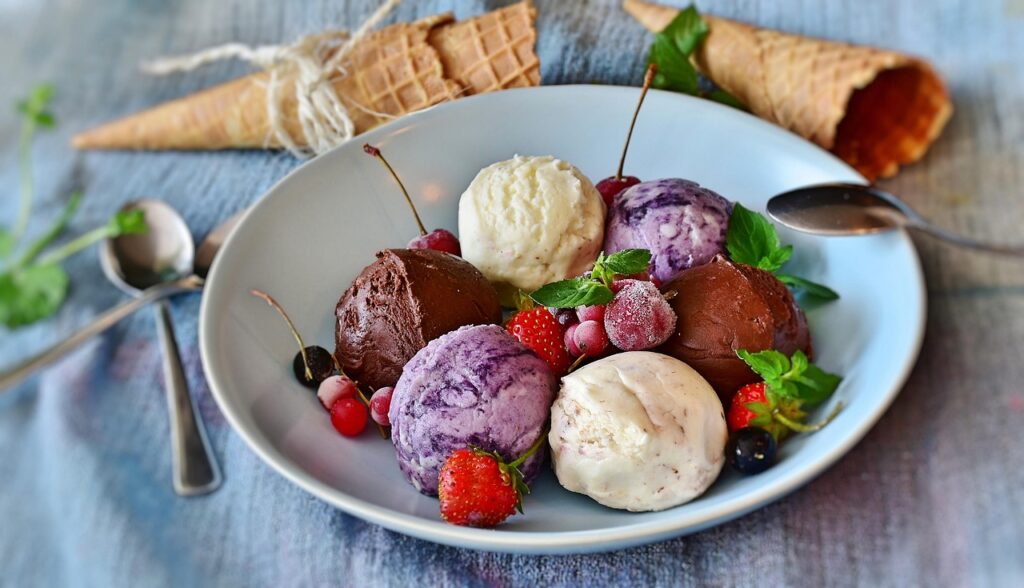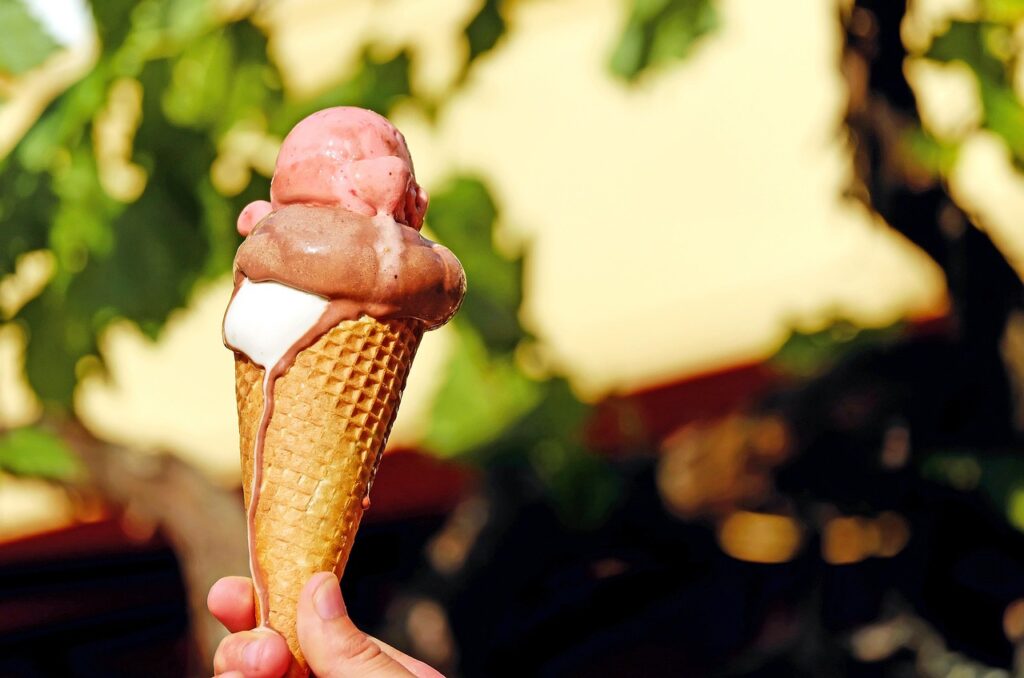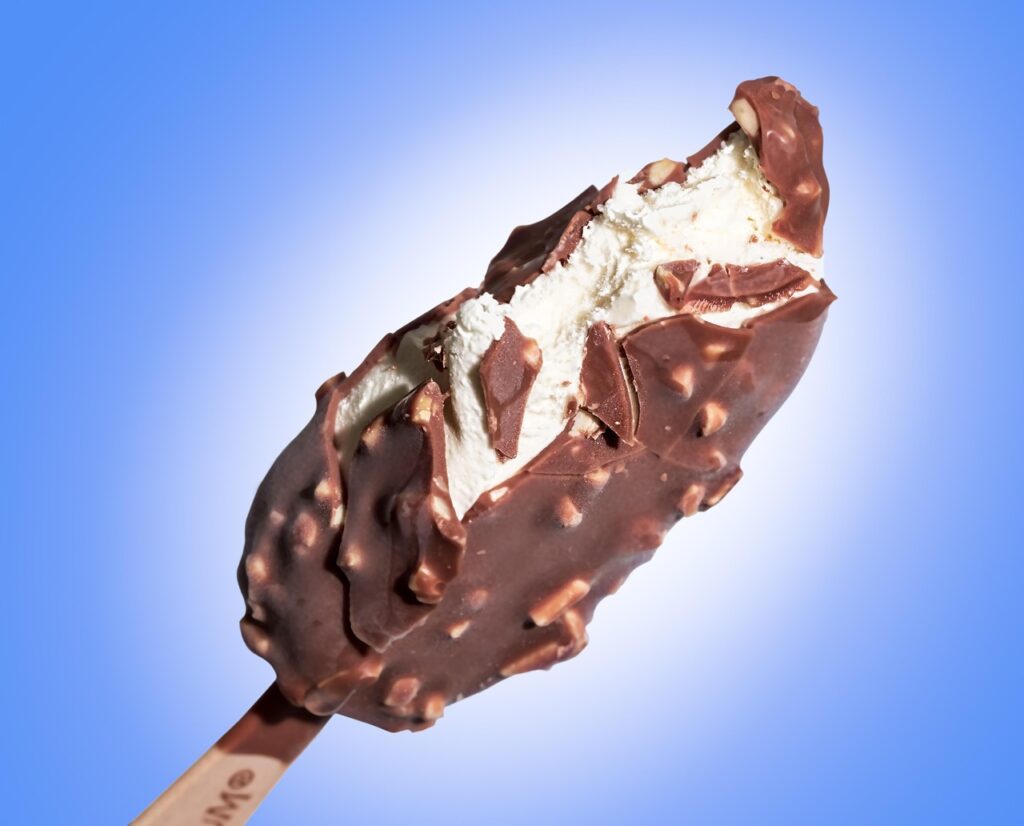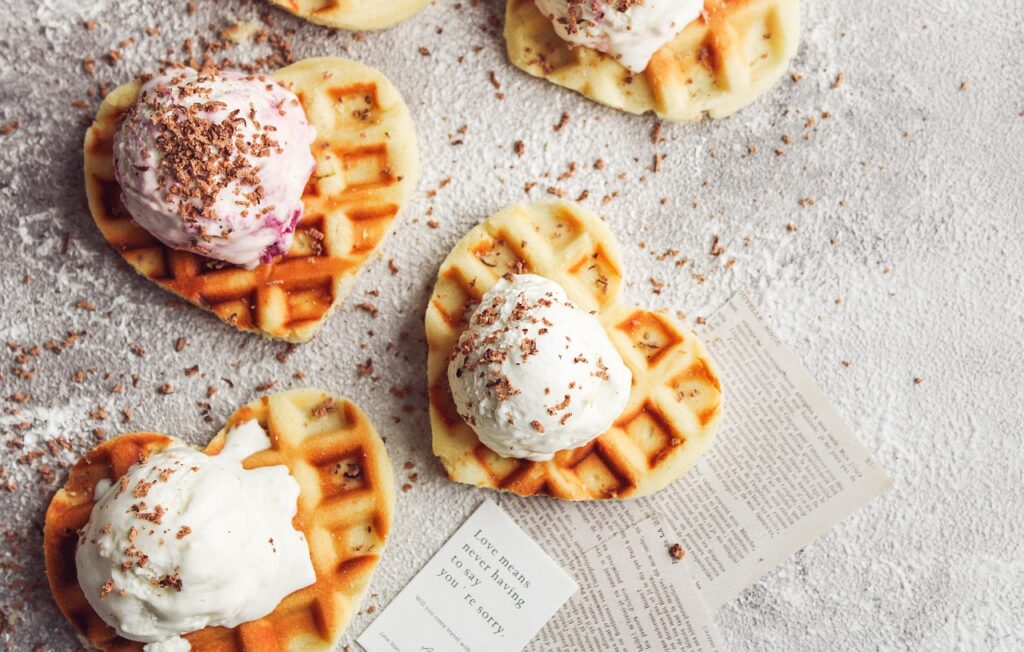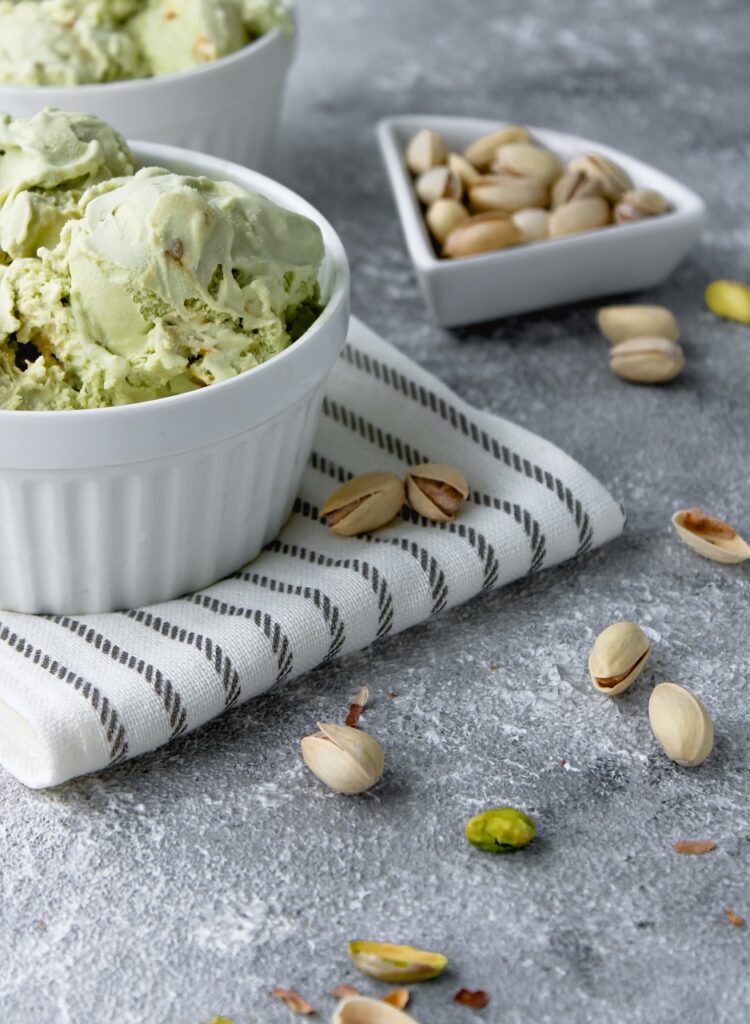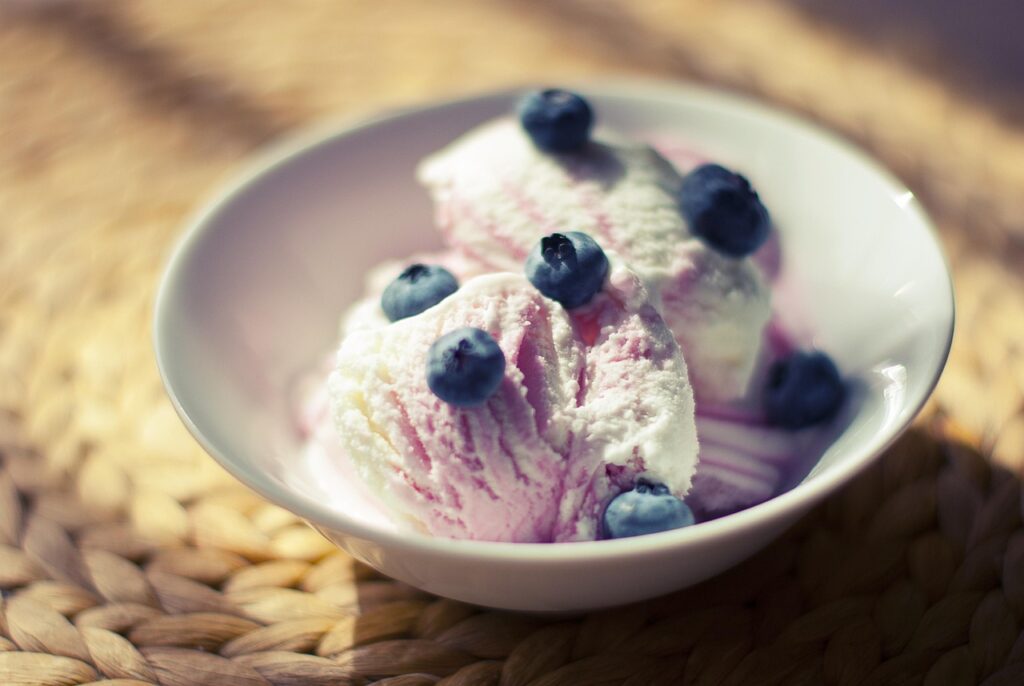
Who doesn’t love a good ice cream cone? It’s the quintessential treat, a beacon of joy on a warm day, and let’s be honest, way more fun than eating ice cream out of a cup. But while we’re all out there living our best, cone-licking lives, there’s a silent struggle happening behind the counter, a series of unspoken pleas from the dedicated ice cream slingers who just want to make your dessert dreams come true without a sticky disaster.
You see, for every perfectly presented scoop, there’s a potential meltdown waiting to happen, a cone teetering on the brink of structural integrity, or a topping choice that’s just begging for a sticky mess. We’ve all been there: that moment when your beautiful scoop starts dribbling down your hand, or your cone goes from crisp to crumbly in seconds. It’s a tragedy, truly.
But what if we told you that some of these mishaps are entirely predictable, even dreaded, by the very people crafting your frozen delights? Prepare yourselves for some candid confessions straight from the front lines of your favorite scoop shops. We’re about to reveal the cones staff secretly hope you’ll skip, not because they don’t love you, but because, well, they’re a mess to make (and eat!).
1. **The Overloaded Cone: A Dribble-Down Disaster Waiting to Happen** We get it, you want value for your money, and who doesn’t love a towering monument of ice cream? But here’s the scoop (pun intended!): overly large ice cream scoops are the number one culprit for premature cone failure and, frankly, a massive mess. While it might look impressive for a hot second, gravity and thermodynamics are not on its side.
As soon as that behemoth scoop hits the cone, it starts a race against time. The ice cream begins to melt, and with nowhere else to go, it dribbles down the sides. Even worse, it can seep directly through the bottom of the cone, turning your hand into a sticky river of sugary goodness. It’s a challenge for the scooper to even get it on there without immediate collapse, and a guaranteed wardrobe malfunction for you.
The staff are doing their best to defy physics when crafting these colossal creations. They’re balancing your desire for a generous portion with the practical reality of cone stability. So, next time you’re eyeing that extra-large scoop, remember the silent prayers of your server, hoping against hope that it doesn’t become a soupy cascade moments after you walk away. A slightly smaller, well-balanced scoop is often the key to maximum enjoyment and minimum mess.
2. **The Flimsy Sugar Cone: A Structural Integrity Nightmare** Ah, the classic sugar cone. It’s got that lovely grid pattern and a satisfying crunch, but from a structural standpoint, it’s often the weakest link in the ice cream chain. The context tells us quite plainly that “Sugar cones are more likely to get soggy than waffle cones.” This isn’t just a preference; it’s a scientific reality based on their composition and thickness.
These cones are generally thinner and more delicate than their waffle counterparts, making them incredibly susceptible to moisture absorption. Think of it like a piece of paper – introduce water, and it quickly loses its form. The moment cold ice cream meets the relatively warm sugar cone, condensation forms, and that delicate structure begins to soften.
Staff know that once a sugar cone starts to soften, it’s only a matter of time before it caves. They might try to handle it with the utmost care, but the inherent flimsiness means they’re always a bit on edge. It’s a race against the clock to get it into your hands before the inevitable sag begins, often leaving them wondering if a sturdier option might have been a better choice for both of you.
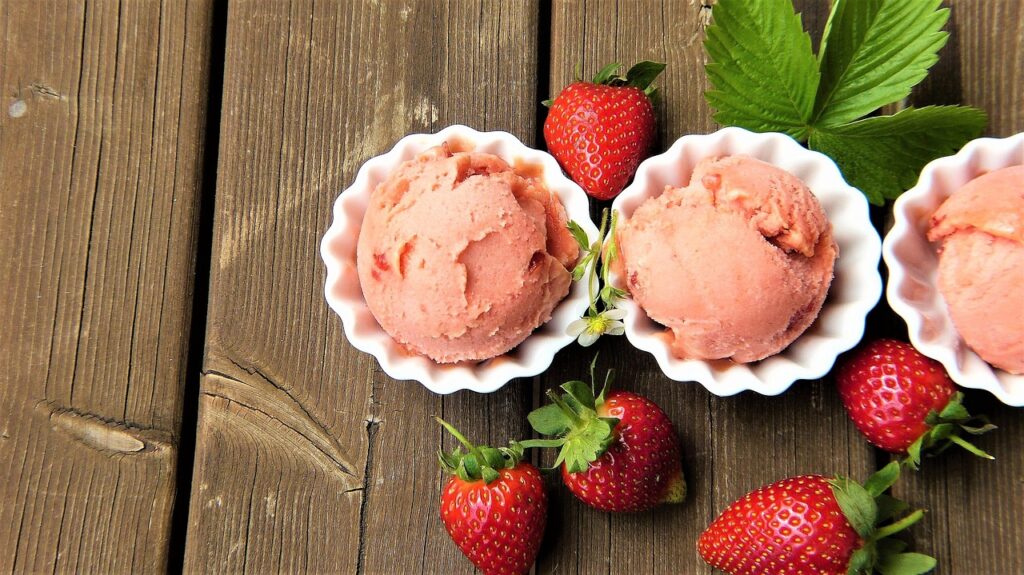
3. **The Flat-Bottomed Fiasco: No Defense Against the Drip** While convenience might seem to be the primary advantage of a flat-bottomed cone – it can stand on its own! – it actually sets the stage for a much messier experience. The scientific reality is clear: “flat-bottomed cones are more likely to get soggy than pointed-bottomed cones.” This isn’t just an anecdotal observation; it’s a design flaw when it comes to containing melting ice cream.
A pointed cone, by its very nature, acts like a funnel, guiding any melting ice cream towards the bottom point, which can often be reinforced or, at the very least, offers a narrower escape route. A flat-bottomed cone, however, creates a broad, level surface where melted ice cream can pool and rapidly saturate the entire base.
Imagine trying to catch a waterfall in a wide, shallow basin versus a deep, narrow funnel. The basin overflows quicker, right? That’s the flat-bottomed cone dilemma. Staff see this and know that any significant melt will quickly turn the base into a soggy, drippy sponge, making it a cone they often brace themselves to clean up after.
4. **The Warm Cone Catastrophe: Inviting Condensation to the Party** Here’s a little secret from the ice cream world: temperature isn’t just about the ice cream itself. The cone’s temperature plays a huge role in its lifespan. Our context wisely advises that “A warm cone will cause more condensation than a cold cone,” and even suggests chilling cones by placing them in the freezer for a few minutes before scooping.
When a warm cone meets cold ice cream, it’s like a clash of titans for your dessert. The temperature difference creates immediate condensation on the inside of the cone. This moisture is the first step towards sogginess. It’s like taking a cold drink out on a hot day – the glass immediately gets dewy. Now imagine that dew soaking into your edible cup!
Staff know this dance well. They’ve seen countless warm cones succumb quickly to the inevitable. While they might not always have the luxury of pre-chilling every single cone, they mentally wince when they grab a cone that feels particularly ambient, knowing that they’re fighting an uphill battle against the elements to deliver a crisp experience. A chilled cone gives your ice cream a much better fighting chance.
5. **The Too-Many-Toppings Tower: A Recipe for Structural Failure** Toppings are delightful! They add texture, flavor, and a personalized touch to your ice cream. But, and this is a big but, “Toppings like sprinkles and chocolate chips can add moisture to the ice cream, which can make the cone soggy.” This might seem counterintuitive, as dry toppings don’t *directly* add liquid, but their impact on moisture dynamics is significant.
Many toppings, especially those with sugar, can draw moisture, or, more commonly, they act as a surface for melting ice cream to cling to, preventing it from being consumed quickly. As the ice cream melts around them, these toppings can become embedded in the sugary syrup that forms, accelerating the softening of the cone beneath. Plus, a tower of toppings often requires the ice cream to be piled higher, increasing the surface area exposed to the air and thus, the rate of melting.
For the staff, creating a topping-laden masterpiece is a delicate art. They’re trying to fulfill your desire for a beautiful, loaded cone while simultaneously trying to prevent it from collapsing under its own weight and added moisture. It’s a constant battle between presentation and practicality, and sometimes, less really is more when it comes to cone integrity.

6. **The Leisurely Licker’s Lament: Time is the Enemy of Crispness** We’ve all been there: enjoying a warm day, savoring each lick of our ice cream, taking our sweet time. But here’s a hard truth: the clock is always ticking when it comes to a crisp cone. The context explicitly states, “The longer the ice cream sits in the cone, the more time it has to dissolve the sugar and create condensation.” This isn’t just about melting; it’s about a chemical process.
As the ice cream slowly melts, the sugar within it dissolves into the condensation that forms on the inside of the cone. This creates a sticky, sugary syrup that acts as a powerful solvent, actively softening the cone from the inside out. The longer this process goes on, the more your once-crisp cone transforms into a pliable, gummy mess.
From behind the counter, staff watch with a mix of admiration and dread as customers slowly enjoy their cones. They know that every minute spent admiring the scenery or chatting with friends is a minute closer to the cone’s demise. While they certainly want you to enjoy your treat, they also know that the quickest route to a satisfyingly crisp cone experience is to simply, well, eat it quickly!”
Okay, so we’ve already spilled the tea on some of the most notorious cone culprits that give our beloved scoopers silent nightmares. But hold onto your hats (and maybe a few napkins!), because we’re not done yet! There are still more hidden pitfalls in the wonderful world of ice cream cones that staff secretly wish you’d politely bypass. It’s not about denying you joy, it’s about preventing a sticky apocalypse for everyone involved. Let’s dive into the next batch of cone confessions!
7. **The Coated Cone Quandary: When Protection Becomes a Problem** You see those cones lined with chocolate or a sugary glaze and think, “Aha! A fortress against the melt!” It’s a smart idea in theory, offering a perceived barrier between your precious ice cream and the delicate cone. And yes, our context confirms that “Some cones come with a chocolate or sugar coating, which can provide a barrier against moisture absorption.” It sounds like a win-win, right? A delicious, extra layer of defense!
However, like all good intentions, there’s a flip side. That very coating, designed to protect, isn’t always foolproof. In fact, it can become part of the problem. “This coating can also become soggy if it comes into contact with enough water,” our sources reveal. Imagine your perfectly dipped cone, now with a layer of melty, sticky chocolate or sugar that’s no longer a solid barrier but a gooey, sugary mess itself.
For the folks behind the counter, it’s a delicate balance. They know you’re opting for a coated cone for a reason – usually to prolong its crispness. But they also know that if the ice cream starts to melt too quickly, that protective coating can quickly turn from hero to villain, creating a whole new level of sticky catastrophe that might even drip more dramatically than an uncoated cone. It’s a gamble, and sometimes, the house (or rather, the heat) wins.
8. **The Ultra-Thin Wafer: A Meltdown Waiting for a Moment** While we touched on the flimsy sugar cone earlier, let’s talk about its even more precarious cousin: the ultra-thin wafer cone. These aren’t just delicate; they feel like they might dissolve just by looking at them. You know the ones – super light, super airy, and often found holding a single, modest scoop of something light and fluffy. They look elegant, but they’re a scooper’s secret stress test.
The science is pretty straightforward here: “Thin, wafer-like cones are more susceptible to moisture absorption than thicker, sturdier cones.” It’s like trying to hold a heavy book with a single sheet of tissue paper. They simply don’t have the structural integrity to stand up to the cold, the moisture, or frankly, the sheer joy of a multi-scoop experience. Even a small amount of condensation can be their undoing.
For the staff, crafting a cone with these fragile beauties is a high-stakes operation. They’re trying to scoop without cracking the cone before it even leaves the tray, let alone before it reaches your hand. There’s a constant fear that a slight bump or an enthusiastic placement of ice cream will result in immediate structural failure, turning your anticipated treat into a pile of crumbs and cream before its time. It’s a race against fragility.
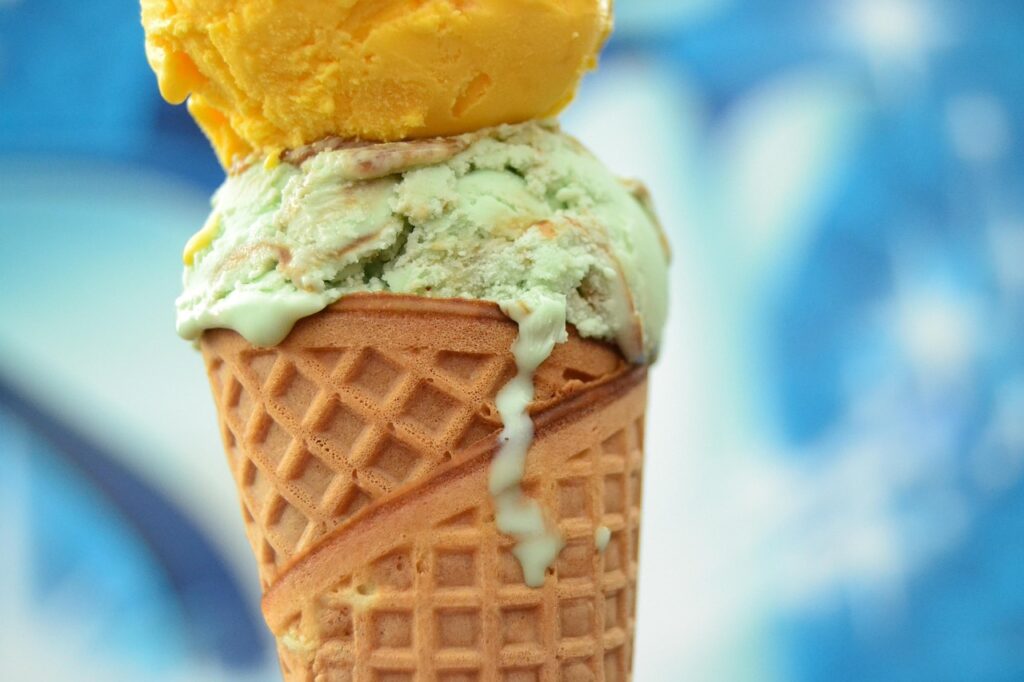
9. **The Speedy Soft-Serve Sinker: Low Fat, High Risk** Ah, soft-serve! That creamy, dreamy swirl that takes us back to childhood carnivals and sunny beach days. It might seem like a simple choice, but for cone integrity, soft-serve presents a unique, fast-paced challenge. It’s often seen as a lighter option, but that very characteristic makes it a ticking time bomb for your cone.
Here’s the scoop on why: “Soft-serve ice cream, with its lower fat content, melts more quickly, leading to faster sogginess.” Unlike denser, higher-fat ice creams that hold their form a bit longer, soft-serve is on an express train to liquid-town. This rapid melt means your cone is subjected to a quicker, more intense moisture attack from the get-go, accelerating its inevitable journey to sogginess.
Staff members are well aware of soft-serve’s sprint to melt. They’ll often try to serve it as quickly as possible, knowing that every second counts before it begins its drippy descent. For customers, it means you’ve got to be a speed-eater. That leisurely stroll with your cone? Forget about it! With soft-serve, you’re practically on a timer to enjoy it before it becomes a sticky waterfall down your arm, creating a mess that scoopers often anticipate with a sigh.
10. **The Humid Haze Hazard: When the Air Itself Conspires Against Your Cone** You’ve picked the perfect cone, a delightful flavor, and limited your toppings. You’re ready for an optimal ice cream experience! But then you step outside, and the air itself seems to be working against you. That’s the humid haze hazard, and it’s a silent killer of crisp cones, totally out of anyone’s control (except maybe a weather wizard).
Our expert sources explain it perfectly: “External factors such as temperature and humidity can also contribute to sogginess. High temperatures accelerate ice cream melting, while high humidity provides more moisture for the cone to absorb.” It’s a double whammy! The heat makes your ice cream melt faster, and the humidity in the air simultaneously attacks your cone, saturating it from the outside in.
For staff, a hot, humid day is like a constant battle against the elements. They know that even the most perfectly constructed cone is fighting an uphill battle against Mother Nature. They’re practically performing magic trying to get that cone into your hand before it begins its soggy transformation, knowing that the environment is conspiring to turn it into a sticky, drippy nightmare for everyone. It’s a truly unavoidable mess they wish they could, well, skip.
11. **The “Just Lick It” Leap of Faith: No Spoon, No Strategy, Just Sticky Fingers** We all love a good lick of ice cream, letting that cold sweetness wash over us. But here’s a confession: sometimes, our eagerness to just ‘go for it’ without a game plan can turn a perfectly good cone into a drippy disaster. It’s the “just lick it” leap of faith, and while admirable in its enthusiasm, it often leads to sticky consequences for both you and, indirectly, for the cleanup crew.
Think about it: how many times have you watched someone (or maybe even yourself!) attack a cone, letting the ice cream hang precariously over the edges, just waiting for gravity and melting to take over? There’s a brilliant, simple hack often employed by seasoned cone-eaters, as noted in our context: using a spoon. “The spoon doesn’t have to be used for ferrying the ice cream from the cone to your mouth… it’s an important tool for pushing the ice cream down into the cone as you eat.” Mind blown, right?
This strategic spooning ensures “the scoop of ice cream is never hanging over the edges of the cone like this, meaning you can eat it at a slightly more leisurely pace without worrying about it melting or dripping all over.” Without this technique, that delicious scoop teeters on the brink, and every lick pushes it further towards the edge. The staff, from their vantage point, see the impending drip-down disaster and know a sticky cleanup is just moments away.
It’s a small adjustment, but a mighty one. By keeping the ice cream nestled *within* the cone, you prevent those dreaded drips, ensure each bite gets a perfect mix of ice cream and cone, and avoid those sad, dry bits of cone at the end. It transforms the eating experience from a race against the melt to a delightful, controlled savoring, making it a cone experience that even the staff can appreciate won’t end in a sticky heap.
So there you have it, folks! The curtain has been pulled back on the secret anxieties of ice cream shop staff everywhere. From the structural gymnastics required for overloaded cones to the environmental villains like humidity, it’s clear that crafting and enjoying a mess-free ice cream cone is truly an art form. But don’t let these confessions deter you! Instead, let them empower you with knowledge. By making more mindful cone choices and maybe even trying a clever eating strategy or two, you can help your favorite scoopers (and your favorite outfit!) avoid those sticky situations, ensuring every single lick is a moment of pure, unadulterated joy. Go forth, sweet treat lovers, and conquer your cones with confidence and minimal mess! You got this!

